Best Practices for Conducting Video Consultations
Chosen theme: Best Practices for Conducting Video Consultations. Welcome to a practical, human-centered guide for running smooth, secure, and empathetic virtual sessions. Explore tested techniques, real stories, and actionable checklists—then join the conversation by sharing your tips, questions, and experiences.
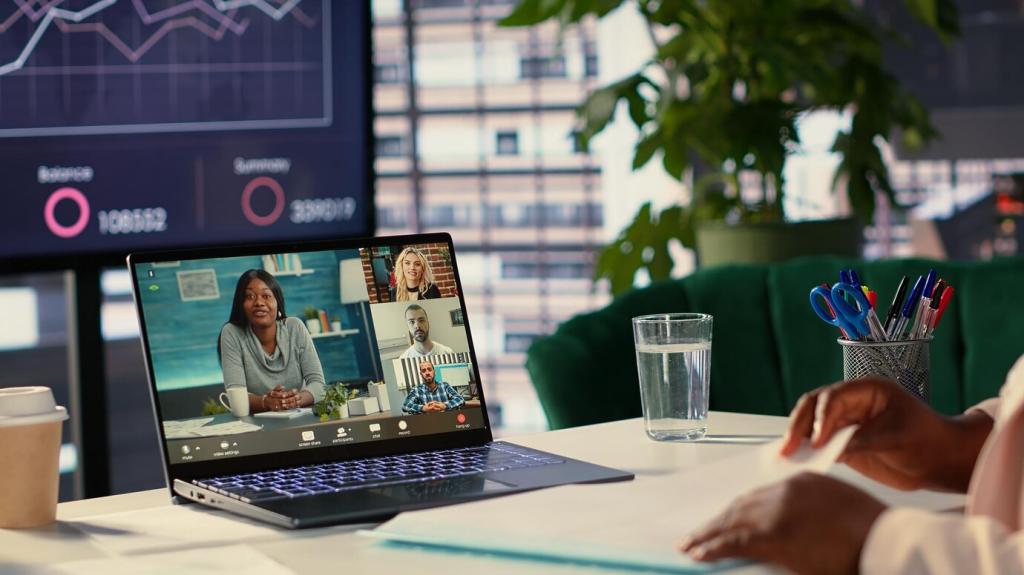
Set the Stage: Environment and Framing

Lighting that flatters and informs
Prioritize soft, front-facing light to keep your face evenly lit and expressive. A lamp at a 45-degree angle, or a small ring light set to a neutral temperature, prevents harsh shadows. One clinician shared that patients opened up more once they could clearly read her expressions. Try it, and tell us if lighting changed your conversations.

Camera placement and eye contact
Place your camera at eye level, slightly above the screen center, to create natural, friendly eye contact. Stick a small note beside the lens to remind yourself to look there when delivering key points. A quick 30-second rehearsal recording helps tune distance and framing. Share your results and what felt different when you adjusted eye contact.
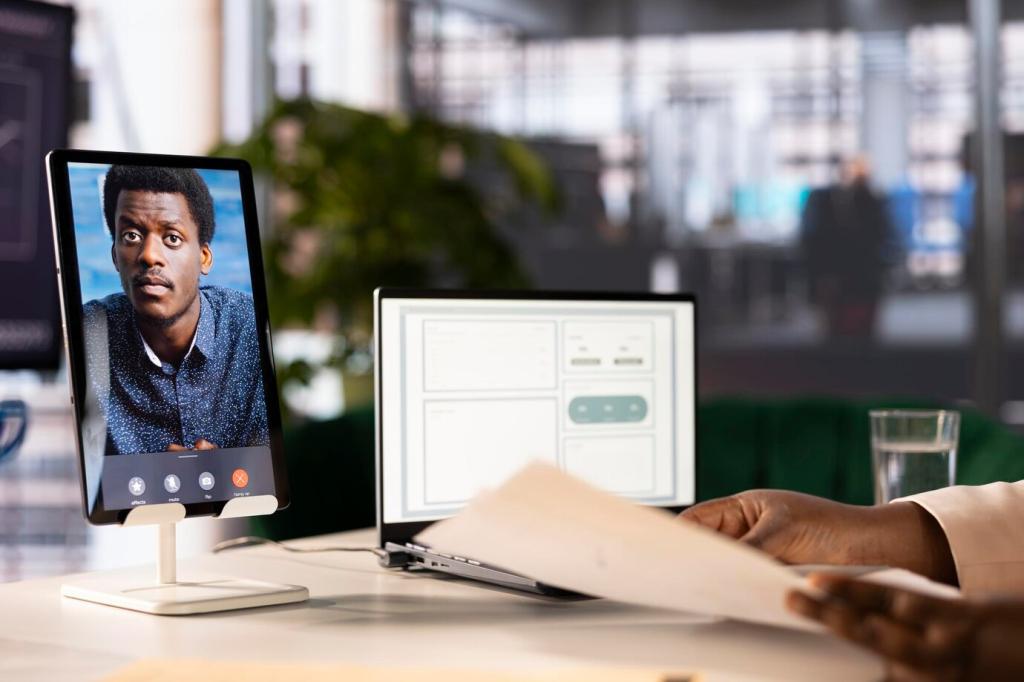
Backgrounds that signal professionalism
Choose a tidy, neutral background with a touch of warmth, such as a plant or a framed certificate. Avoid busy virtual backgrounds that cause visual artifacts or strain older devices. A subtle personal item can spark rapport without stealing focus. What two objects best represent your professional values? Post them and explain why.
Tech Fundamentals: Reliability First
For smooth video, prioritize wired Ethernet or strong Wi‑Fi 6 near your router. Aim for at least 5 Mbps upload for 1080p, keep jitter low, and have a mobile hotspot ready as backup. A short pre-call speed test prevents surprises. What speeds do you consistently see? Share your numbers and any reliability tricks you rely on.
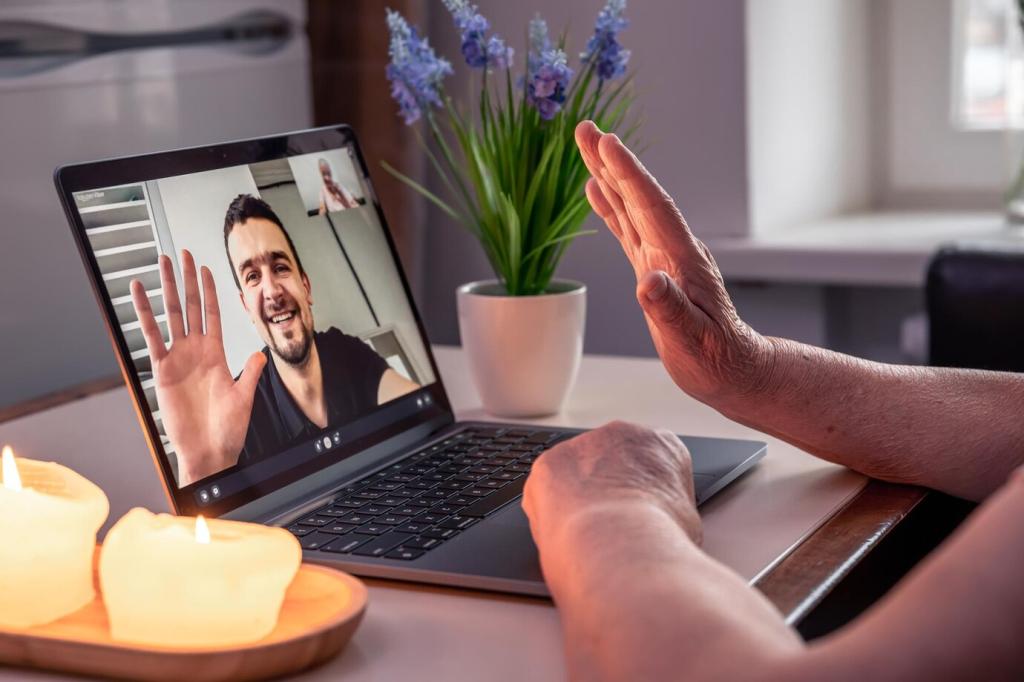
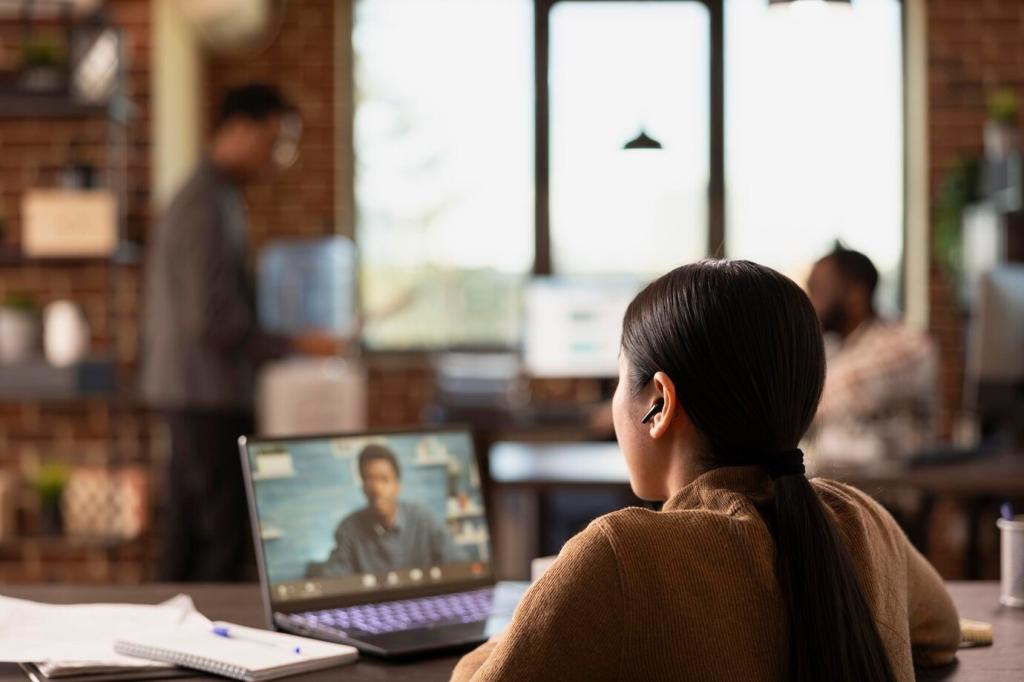
Tech Fundamentals: Reliability First
Clear audio beats perfect video every time. Use a USB microphone or quality headset, enable echo cancellation, and reduce room echo with soft furnishings or panels. One team avoided a costly error after mishearing “fifteen” as “fifty”—a better mic solved it. Try a clap test for echo, and report how your space responds.
Human Connection: Presence and Etiquette
Start by confirming names, audio, and video, then share a brief agenda and time estimate. A quick, friendly check-in—“How is your day going so far?”—lowers tension. Research and experience show that explicit agendas reduce interruptions and missed concerns. What opening line works for you? Comment with the words that set your tone.
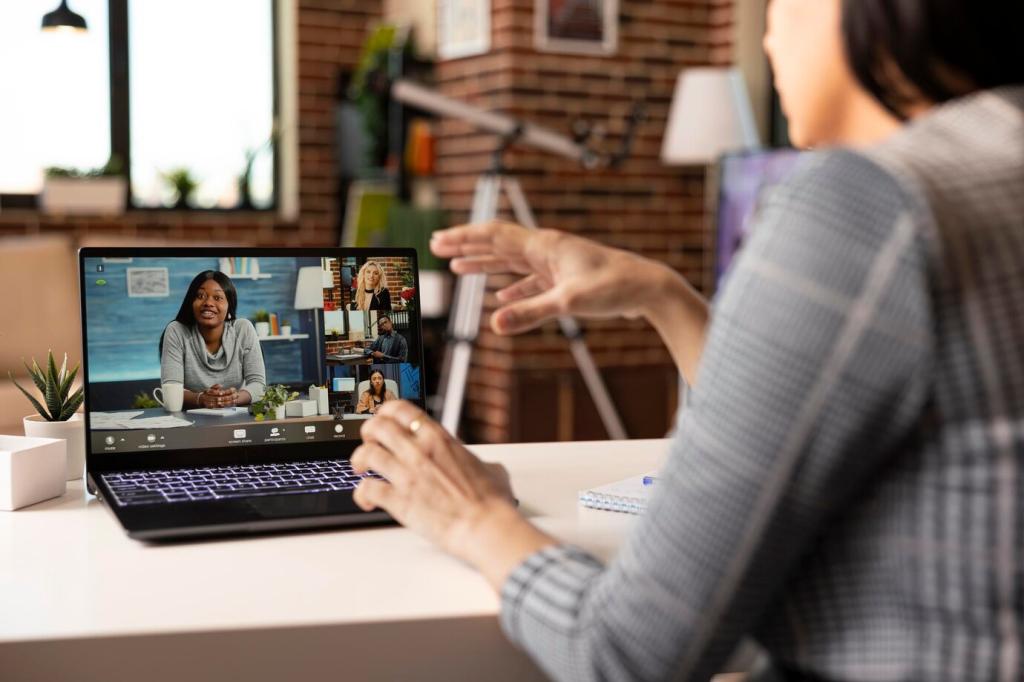
Privacy, Safety, and Consent
Plain-language consent that earns trust
Describe what will happen with video, audio, and notes, whether recording is used, and how to withdraw consent. A simple script—“We will not record today, and your information is encrypted in transit”—goes a long way. End with a clear confirmation question. Adapt this script to your context, and share your version with our community.
Protecting data in transit and at rest
Use strong encryption, unique meeting links, waiting rooms, and authenticated access. For regulated work, ensure contracts and settings match requirements in your region. Review retention policies and access controls regularly. Which vendor settings did you tweak for security? Tell us so others can harden their configurations faster.
Managing emergencies remotely
At the start, gather the person’s current location, an emergency contact, and local services. Create a safe word protocol for sensitive situations. One provider quickly escalated care after recognizing alarming symptoms and dispatching help to the verified address. What does your escalation script look like? Share it to inspire safer practice.
Send reminders with a device test link, joining instructions, and expectations about environment and identification. Ask people to prepare medications, documents, or photos as needed. Include a direct phone number as a backup plan. Want a copy of our checklist? Comment, and we will send a customizable template you can adapt.
Workflow that Works: Before, During, After
Engagement and Accessibility
Visual aids and shared resources
Use simple visuals, on-screen annotations, and co-browsing to clarify concepts. A dermatologist told us lesion diagrams reduced anxiety by turning vague descriptions into shared understanding. Provide downloadable resources after the call. What visual aids do you love? Upload examples or describe your go-to references and why they resonate.
Accessibility features that matter
Offer captions, adjust contrast, and provide keyboard shortcuts when possible. Arrange interpreters or assistive technologies early, and avoid flashy backgrounds or rapid animations. Confirm that instructions are available in the person’s preferred language. How do you audit accessibility in your platform? Share your checklist to help others improve.
Children, groups, and caregivers
Set clear ground rules for turn-taking, privacy, and interruptions when multiple people join. For adolescents, establish confidential portions with consent. In caregiver scenarios, confirm roles and decision-making authority. What strategies help you manage multi-party calls smoothly? Tell us what you do before the session to keep things orderly.
Troubleshooting with Grace
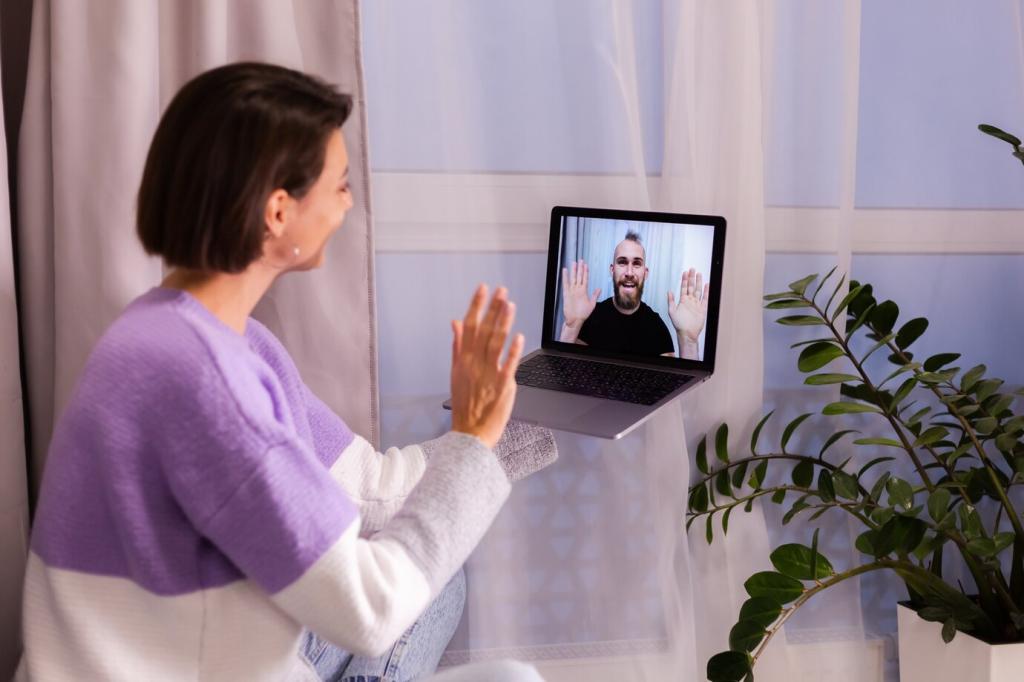
When problems arise, move through a simple sequence: confirm mute settings, rejoin the meeting, switch devices, or downgrade video before falling back to phone. Narrate what you are doing so people are not left guessing. Print your checklist and keep it visible. Which steps save you most often? Share your top three.
Metrics that matter
Track first-contact resolution, no-show rates, average wait time, and satisfaction trends. Pair experience metrics with outcome proxies where appropriate to avoid chasing vanity numbers. Visualize changes over time rather than fixating on single points. Which metric moved after a small tweak? Share your chart and the story behind it.
Peer feedback and calibration
With consent, conduct brief peer observations to calibrate language, pacing, and clarity. A twenty-minute debrief can produce small, powerful adjustments that stick. Rotate roles and keep feedback kind, specific, and actionable. Interested in a feedback circle? Comment, and we will help match you with peers.
